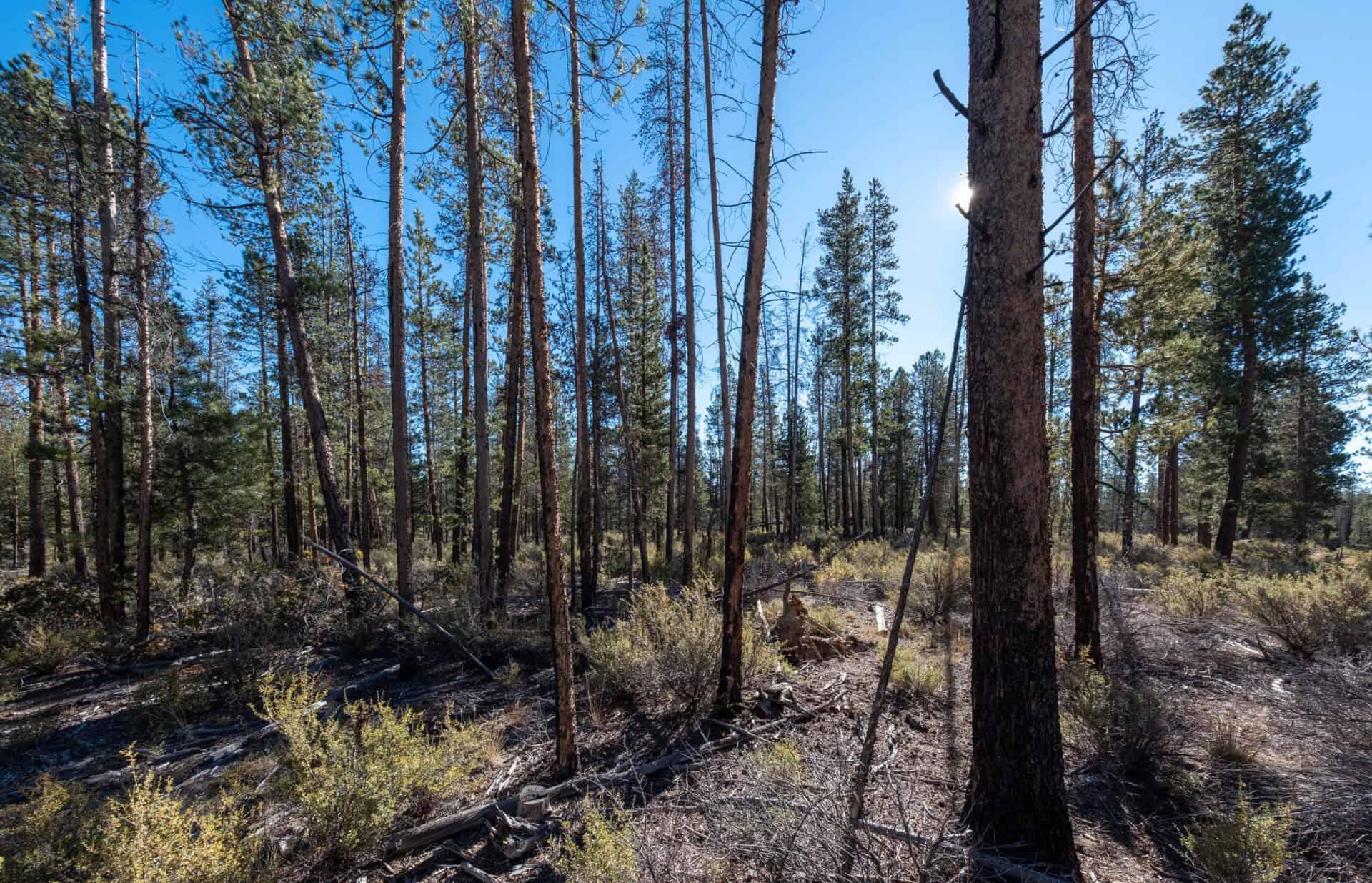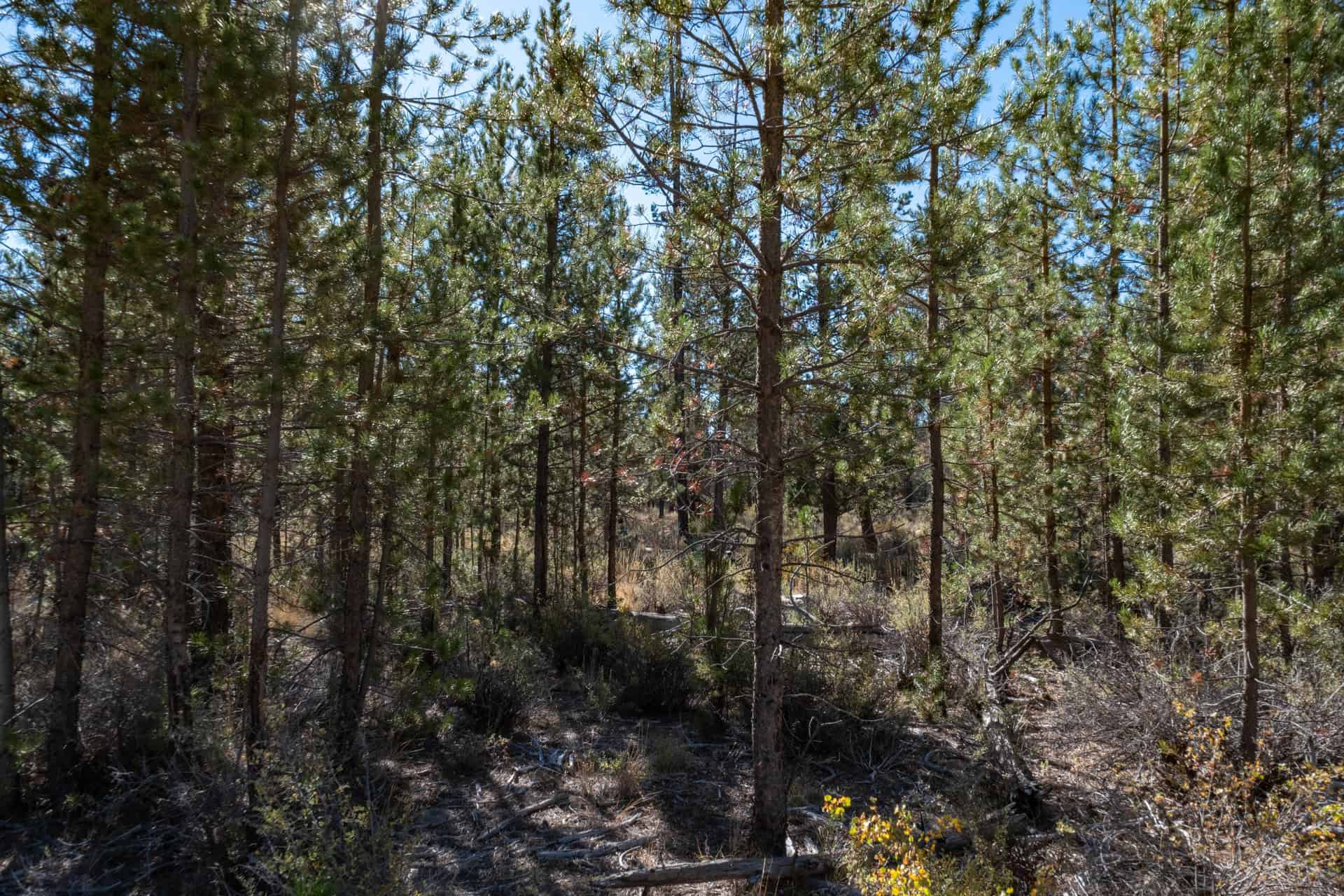I asked the Fremont-Winema to give us some photos of the forests in the Bear Wallow Project, and received two photos and the above video. I suppose many don’t know what these forests look like, they are fairly unique.
Here’s the ODF write-up on the project:
The Bear Wallow project comprises about 17,000 acres of National Forest, approximately 40 percent of which is former Industrial Timber lands, some of which were heavily logged prior to Forest Service acquisition from Shevlin-Hixon Lumber Company in 1943. . Fire suppression and the lack of other active management has resulted in dense mixed conifer encroachment (mainly lodgepole pine), raising fire hazard and creating competition with more desirable species, such as ponderosa pine and aspen.
The project intends to improve habitat for wildlife and increase wildfire resilience by thinning less-desirable trees. The restoration prescriptions on the Bear Wallow Project will create openings by removing lodgepole pine and white fir from within 30 feet of mature ponderosa pines and 100 to 200 feet from aspen stands. The prescriptions will retain all trees 21 inches or greater in diameter those within a 75 feet buffer of streams.
Conifer infill began soon after the historical logging of ponderosa pine in the Bear Wallow project area. As a result, many of the trees that require thinning are of commercially desirable size. Through the use of the GNA, the ODF’s FFR Program plans to advertise and administer commercial thinning projects within the project area. Recent FFR Program GNA commercial projects have been purchased by local businesses such as Gilchrist Forest Products LLC, which produce building materials from ponderosa and lodgepole pine. Revenue from these commercial sales will be directed toward additional restoration needs within the project area and potentially elsewhere on the Fremont Winema National Forest.
What I think is particularly interesting about ODFs summary is that they describe the stand history. As I was driving those roads looking for trees to select for tree improvement, I never thought that there used to be ponderosa there and it had been logged. I was looking for living trees, and the form required the ecological classification of plants, so I looked at them. Stumps, not so much.
It reminds me of the old story of the blind men and the elephant. To try to really understand the elephant, you need to get historical data and information from the human beings of the time (for example, Indigenous knowledge and the surveys of John Leiberg, surveyors’ notes and so on), as well as stand exams or equivalent, and other on-the-ground, as well as in the sky measurements. They are all pieces of the puzzle- trying to understand what forests are, how they have come to be the way they are, how they may change into the future, and the possible impacts of different interventions or lack thereof. It can happen that, say, the elephant “ear” people have more money and power/coolness and say that their approach is more sciency and in some epistemological sense, more true. I think we need to be wary, both of losing track of humans and local and Indigenous knowledge, and of some conflict of interest between scientists and their favored sensing and analysis tools. Anyway, that was a bit of a philosophical detour while I was waiting for the Youtube to load.
Lots of dead and downed, with a good amount of standing dead lodgepole.
Lodgepole doghair thicket.


I worked in similar forests on the Winema NF. Frequent fires used to keep the lodgepoles from becoming thick. High-grading was always a historical problem (which environmentalists still contend is happening everywhere). There are also plenty of pure lodgepole stands around, which have their own life cycles and renewal. I’ve seen what happens when a thick lodgepole understory burns, when I did fire salvage out of Chiloquin. I’ve also participated in the more recent thinning projects there, back in 2007. Here’s a link to what those forests look like, today:
https://www.google.com/maps/@42.6331023,-121.7030763,1081m/data=!3m1!1e3?authuser=0&entry=ttu&g_ep=EgoyMDI0MTAwMS4wIKXMDSoASAFQAw%3D%3D
Here’s is the view of the fire salvage project I was (un-officially) Sale Administrator of:
https://www.google.com/maps/@42.5790241,-121.4749683,1082m/data=!3m1!1e3?authuser=0&entry=ttu&g_ep=EgoyMDI0MTAwMS4wIKXMDSoASAFQAw%3D%3D They have done some ‘interesting’ things with the post-fire plantations, in the area. Obviously, they need to thin out this particular area. I’m kind of sad that you cannot see my skid trail patterns anymore. Most of the harvesting was done with dozer-mounted shears (not the best for the soils). I was able to keep soil disturbance to a minimum, with my skid trail patterns.
Between insect-time and star-time, humans are way closer to insect-time than trees.
“Fire suppression and the lack of other active management has resulted in dense mixed conifer encroachment (mainly lodgepole pine), raising fire hazard and creating competition with more desirable species, such as ponderosa pine and aspen. The project intends to improve habitat for wildlife and increase wildfire resilience by thinning less-desirable trees.”
Maybe we shouldn’t expect journalistic honesty or clarity from ODF, but why didn’t they say, “Fire suppression and natural succession have resulted …” They create and admit a clear bias with their formulation of the problem in terms of a solution. Or if it wasn’t “natural” because there was no ponderosa seed source, they should say that.
Then there is what is “desirable.” That should tie back to the forest plan, as in the desired condition for this area is more ponderosa pine and aspen. It’s pretty obvious that lodgepoles like this place, but why aren’t they desirable? I’m sure the Forest Service explained all this much better.
Why are you so snarky about ODF? Anyway, is it “natural succession” if all the pondos are gone and there has been fire suppression? It doesn’t sound very natural. In fact, perhaps Native Americans influenced the fire regimes, so that wasn’t natural either.
As to why lodgepoles are less desirable, they aren’t really they just don’t need as much attention to thrive. I haven’t looked up what the FS says, but here’s my take on the silviculture of the area..
Lodgepole is a very robust species in this area. It doesn’t really need to be managed for because it’s the default. Grows up in clumps, dies and burns? Grows back. Grows tall, gets eaten by beetle and burns? Grows back. Maybe in clumps, and so it goes.
It’s only if you want something else that needs to be managed, especially pp which needs to be thinned around so it resists fires, or maybe even planted if there is no natural regen. Other species may seed in to aspen stands, so people thin those out to retain aspen. Basically other species need attention for forests to have species diversity. True firs are more complex, as they can be ladder fuels and are also susceptible to disease and bugs. So you want to keep them in the stands if they are there at some level, without endangering the old ppines (or pumpkins) as they are sometimes known.
In the early 1980s I purchased 1/4 section of mature lodgepole near Gilchrist in partnership with several of my crew members. There was still a large meadow of several acres size and in the NE corner was a huge ponderosa snag and about a dozen seedlings. At the time we had assumed some kind of “climate change,” but the area had more likely been regularly burned by local Indian families with a much larger meadow and scattered ponderosa before it was logged and repopulated with lodgepole. The property was immediately adjacent to the railroad, so may have been logged and scavenged for fuel before Gilchrist was established in the 1930s. I’ve since also learned that ponderosa tends to rot really quickly, and that is why there were no stumps, logs, or other evidence of the previous stand. Pine beetles were big at the time, and were very audible at times.
The Bear Wallow decision includes created openings up to 5 acres in size. I struggle to understand how 5 acre openings created via commercial logging are legitimate “stand maintenance” or “habitat restoration.” Clearcuts do not mimic natural processes, and they represent degraded habitat compared to snag-rich disturbances.